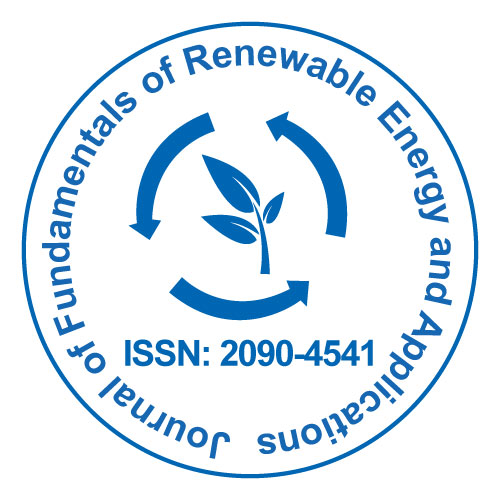
Journal of Fundamentals of Renewable Energy and Applications
Open Access
ISSN: 2090-4541

ISSN: 2090-4541
Joaquin Capablo
University of Zaragoza, Spain
Posters & Accepted Abstracts: J Fundam Renewable Energy Appl
In the present work, the coarse deposit formation on cooled surfaces in biomass-fired boilers has been studied under different experimental conditions, with the focus on the high temperatures in combustion systems. Different deposition tests with real biomasses were conducted to characterize the slagging behavior for a range of conditions representative of those prevailing inside biomass boilers. A cylindrical head probe was used to study the formation of alkali salt deposits. The probe is composed of a cooled (by water or air) head and an exchangeable coupon mounted on it. A number of operational parameters, such as gas temperature around the probe or surface temperature in the bulk gases were changed in order to analyze their influence on the characteristics (morphology, thickness, composition├ó┬?┬Ž) of the ash deposits. Coarse particles are mainly originated from char and mineral fragmentation. Coarse particle deposits are mainly formed by transport of the coarse particles via inertial impaction to the upstream part of the tube, with the highest impaction rates at the forward stagnation point, decreasing rather rapidly with angular position along the surface. At angular displacements larger than about 50├?┬░ (as measured from the forward stagnation point), the rate of inertial impaction drops to essentially zero under conditions typical of combustor operation. On one hand, biomass ashes have been analyzed using ASTM procedures. On the other hand, the deposit structure and composition was investigated by Scanning Electron Microscopy, equipped with Energy Dispersive X-ray Diffraction (SEM/XEDS). The results obtained are useful both to characterize the experimental method and to determine the influence of some parameters relevant to deposition phenomena. In particular, these data will be used for comparison with different predictive methods, including mechanistic models and the empirical correlations traditionally used in this field.
Email: jcapablo@yahoo.es